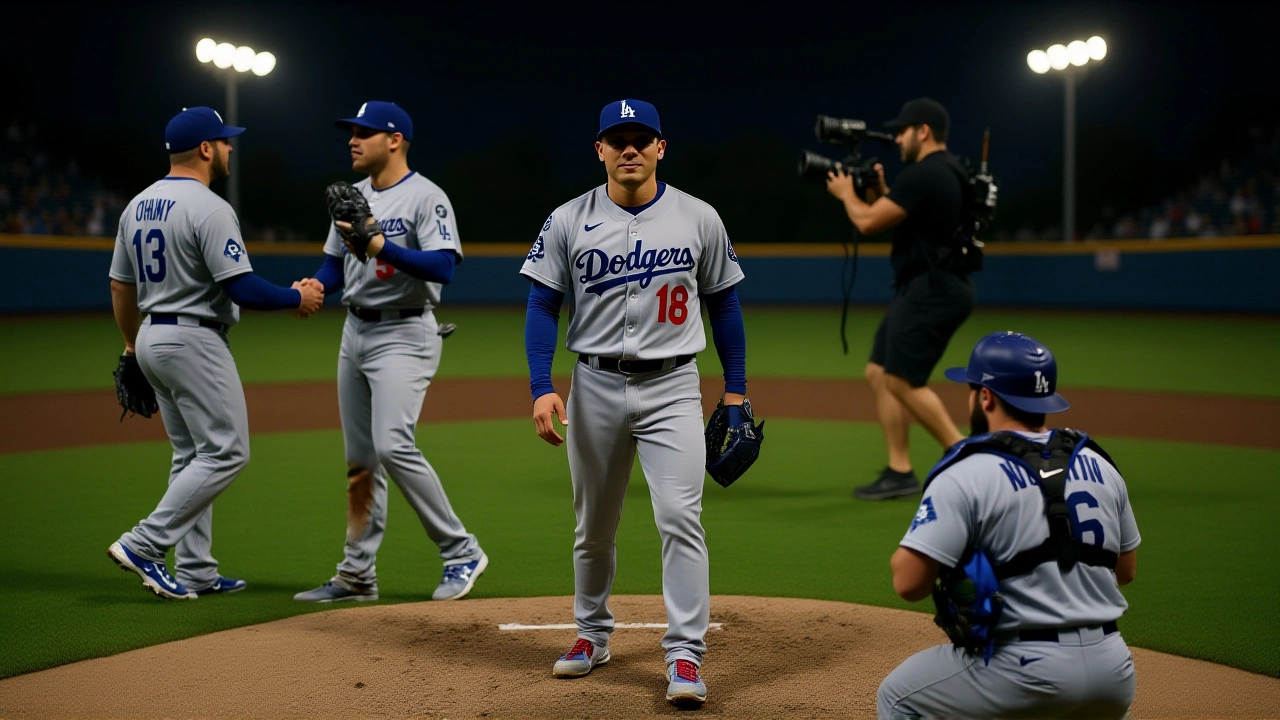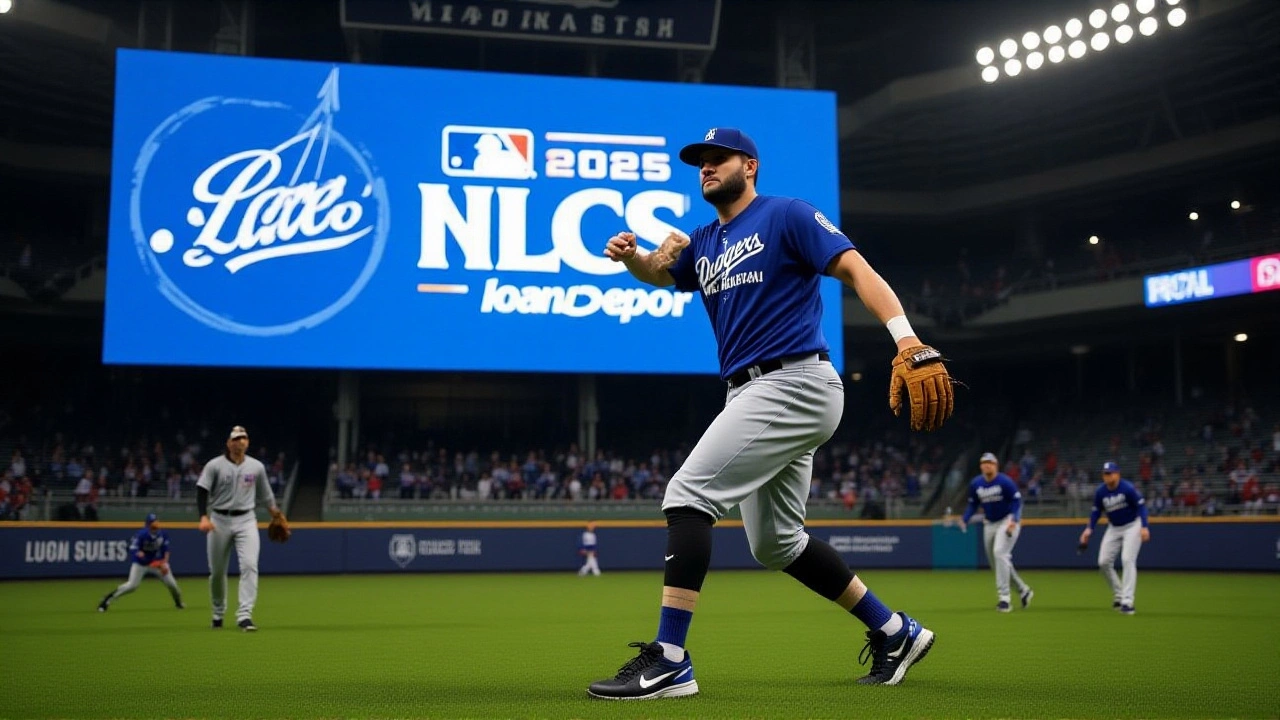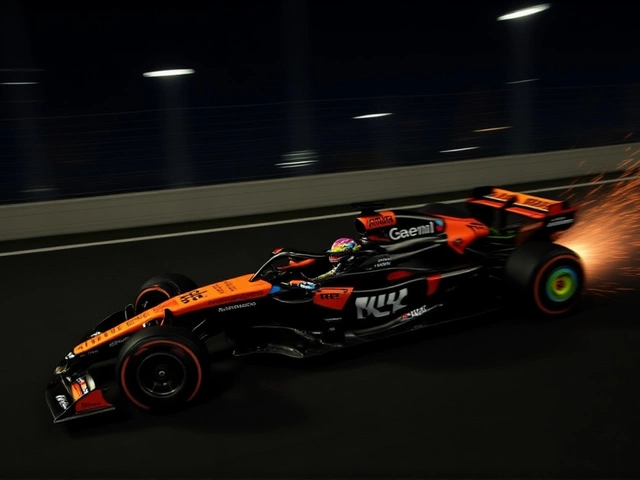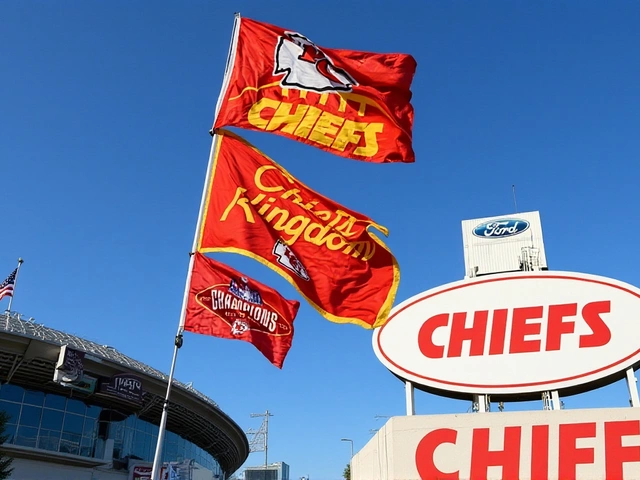When Los Angeles Dodgers defeated the Milwaukee Brewers 3‑1 in Game 3 of the National League Championship Series on Thursday, October 16, 2025, the series turned into a near‑impossible climb for Milwaukee. The win, recorded at Dodger Stadium in Los Angeles, gave the Dodgers a 3‑0 lead in a best‑of‑seven showdown and pushed the Brewers into uncharted, historically fatal territory.
Series Overview and What’s at Stake
Going into Game 3, the NLCS was already a pitching duel. Dave Roberts, manager of the Los Angeles Dodgers had leaned on his ace rotation, while Pat Murphy, skipper of the Milwaukee Brewers relied heavily on a bullpen‑heavy approach. The Dodgers entered the series with the league’s highest payroll—$259 million—while the Brewers operated on a $135 million budget, underscoring the financial disparity that often mirrors on‑field strategy.
Game 3 Recap: Key Plays and Turning Points
Los Angeles starter Tyler Glasnow (31, Thousand Oaks, CA) was activated from the injured list specifically for this postseason assignment. He mixed a high‑velocity fastball with a nasty slider, keeping Milwaukee hitters off balance for six innings. In the sixth, Dodgers shortstop Tommy Edman ripped a single that set off a cascade of events. Shortly after, Willy Adames (Brewers shortstop) made a throwing error that allowed first baseman Freddie Freeman to score, putting Los Angeles ahead 2‑1.
Brewers center‑fielder Jackson Chourio suffered a left‑hand contusion in the sixth and left the game, a blow that forced Milwaukee to shuffle its lineup. In the eighth, outfielder Garrett Mitchell doubled after a triple earlier in the game, but the Dodgers’ bullpen held firm. The finale came in the ninth when closer Roki Sasaki induced a pop‑up from designated hitter Rhys Hoskins for the final out.
Pitching Strategies and the Ohtani Factor
Dodgers’ dominance has largely hinged on minimizing bullpen exposure. In Games 1 and 2, Blake Snell and Yoshinobu Yamamoto combined for 17 innings of one‑run ball, surrendering just four hits and one walk. By contrast, the Brewers logged 17 innings against Dodgers starters with only four hits but were forced into three‑run‑heavy fourth‑inning rallies when they finally faced the bullpen.
Looking ahead, the marquee name for Los Angeles is two‑way star Shohei Ohtani. At 31, the 2024 AL MVP is slated to start Game 4, offering both a mound threat and a potent bat. Analysts, including Dayn Perry of CBS Sports, argue that “exposure”—the frequency with which a hitter sees the same pitcher—will be decisive. Ohtani’s dual‑role could force the Brewers to confront both his pitching arsenal and his power‑hitting in a single game, a scenario that many view as a tipping point.
Brewers’ Challenges and Injury Woes
Milwaukee’s offensive engine sputtered early. The team managed just one run on 11 hits, a fraction of the 17‑run output the Dodgers amassed over the first three games. The loss of Jackson Chourio, a rookie with a 0.273 batting average in the regular season, stripped the Brewers of speed and defensive range in center field. The injury also forced manager Pat Murphy to move veteran catcher Omar Narváez into an unfamiliar outfield spot, disrupting defensive chemistry.
Statistically, the Brewers have fared poorly against Dodgers starters: 4 hits, 1 home run, 1 walk and a lone run across seventeen innings. Those numbers balloon to three walks and another run in merely one inning when facing Dodgers relievers, highlighting a stark discrepancy that the Brewers will need to overturn.

What History Says About a 0‑3 Deficit
In Major League Baseball, no team has ever rallied from a 0‑3 hole to win a best‑of‑seven series. The closest instance came in the 2004 ALCS when the Boston Red Sox rescued themselves from a 0‑2 deficit. That series underscored the psychological weight of facing elimination. For the Brewers, going down 3‑0 means every pitch, every swing carries amplified pressure—not just for the players, but for the front office, which has already invested over $135 million this season.
Psychologists note that teams in such scenarios often experience “choking” under heightened anxiety, while the leading team can play more loosely, knowing they have a cushion. The Dodgers, aware of the historical precedent, have expressed confidence in the clubhouse, with first baseman Freeman telling reporters, “We respect Milwaukee, but we also know how rare this comeback is. We’re just going to keep executing.”
Looking Ahead: Game 4 Preview
Game 4 kicks off at 7:37 p.m. ET on Friday, October 17, 2025, at Dodger Stadium. If the Dodgers start Ohtani, the Brewers will likely counter with left‑hander Aaron Ashby (27, Helena, MT), who posted a 3.15 ERA during the regular season. The matchup pits a 31‑year‑old pitcher with a 102‑mph fastball against a 27‑year‑old left‑hander who relies on finesse—an intriguing contrast that could define the game’s tempo.
Key factors to watch: the health of Jackson Chourio’s left hand, the Dodgers’ bullpen depth with Roki Sasaki cooling down after his ninth‑inning save, and whether Milwaukee can string together enough timely hits to capitalize on any Dodgers’ missteps. A win for the Brewers would be a morale‑boosting miracle; a loss would seal a 4‑0 sweep and send the Dodgers to the World Series for the first time since 2020.
- Series lead: Dodgers 3‑0
- Game 3 score: Dodgers 3, Brewers 1
- Key injuries: Jackson Chourio (left hand)
- Potential Game 4 starter: Shohei Ohtani (Dodgers)
- Historical note: No MLB team has ever overcome a 0‑3 deficit
Frequently Asked Questions
How likely is a Brewers comeback after going down 0‑3?
Historically, a 0‑3 deficit in a best‑of‑seven series is a death sentence—no MLB team has ever rallied to win. The odds are less than 1 % according to sports‑analytics models, making a comeback almost unheard of.
Who will start Game 4 for the Dodgers?
Los Angeles has announced two‑way superstar Shohei Ohtani as the probable Game 4 starter, giving the team a potent mix of pitching depth and offensive firepower.
What impact did Jackson Chourio’s injury have on the Brewers?
Chourio’s left‑hand contusion forced him out of the lineup, stripping the Brewers of a speedy outfielder who also contributed a .273 average in the regular season. His absence disrupted both defense and the middle‑of‑the‑order offense.
How did the Dodgers’ pitching strategy differ from the Brewers’?
Dodgers manager Dave Roberts kept his starters deep into games, using Blake Snell and Yoshinobu Yamamoto for 17 innings of one‑run ball early in the series. In contrast, Pat Murphy leaned heavily on relievers, which led to higher walk rates and less predictable innings.
What does a 3‑0 lead mean financially for both clubs?
Advancing to the World Series guarantees an additional $12 million in postseason shares for each player. For the Dodgers, already on a $259 million payroll, the windfall bolsters an already rich roster. The Brewers, with a $135 million payroll, would see a significant boost, but a sweep would end their financial upside for the year.





